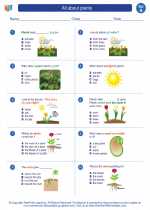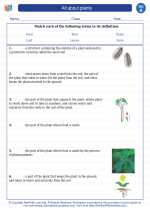Reproduction in Living Things
Reproduction is the process by which living organisms produce offspring of the same kind. It is an essential characteristic of all living things, and it ensures the continuation of a species.
Types of Reproduction
There are two main types of reproduction: asexual reproduction and sexual reproduction.
Asexual Reproduction
In asexual reproduction, a single organism can produce offspring without the involvement of another organism. This can occur through various methods such as budding, fragmentation, or spore formation. Examples of organisms that reproduce asexually include bacteria, yeast, and some plants.
Sexual Reproduction
In sexual reproduction, two organisms of the same species are involved in the production of offspring. This typically involves the fusion of male and female reproductive cells, such as sperm and egg, to form a new individual. Sexual reproduction results in genetic variation and diversity within a species.
The Reproductive Process
Regardless of the type of reproduction, the process involves the following key steps:
- Production of Gametes: Organisms produce specialized reproductive cells, or gametes, which are involved in the formation of new individuals. In sexual reproduction, these gametes are sperm and egg cells.
- Fertilization: In sexual reproduction, the male gamete (sperm) fertilizes the female gamete (egg) to form a zygote, which develops into a new organism.
- Development: The zygote undergoes a series of developmental stages to grow into a mature individual, capable of reproducing.
Importance of Reproduction
Reproduction is crucial for the survival and evolution of a species. It allows for the passing on of genetic traits, adaptation to changing environments, and the maintenance of biodiversity.
Study Guide
To study the topic of reproduction, consider the following key points:
- Identify and differentiate between asexual and sexual reproduction.
- Understand the processes involved in the production of gametes and fertilization.
- Explore examples of organisms that reproduce asexually and sexually.
- Discuss the significance of reproduction in maintaining species diversity and adaptation.
By understanding the mechanisms and importance of reproduction, you can gain a deeper appreciation for the fundamental processes that drive the continuation of life on Earth.
[Reproduce] Related Worksheets and Study Guides:
.◂Science Worksheets and Study Guides First Grade. All about plants

 Worksheet/Answer key
Worksheet/Answer key
 Worksheet/Answer key
Worksheet/Answer key
 Worksheet/Answer key
Worksheet/Answer key
 Vocabulary/Answer key
Vocabulary/Answer key
